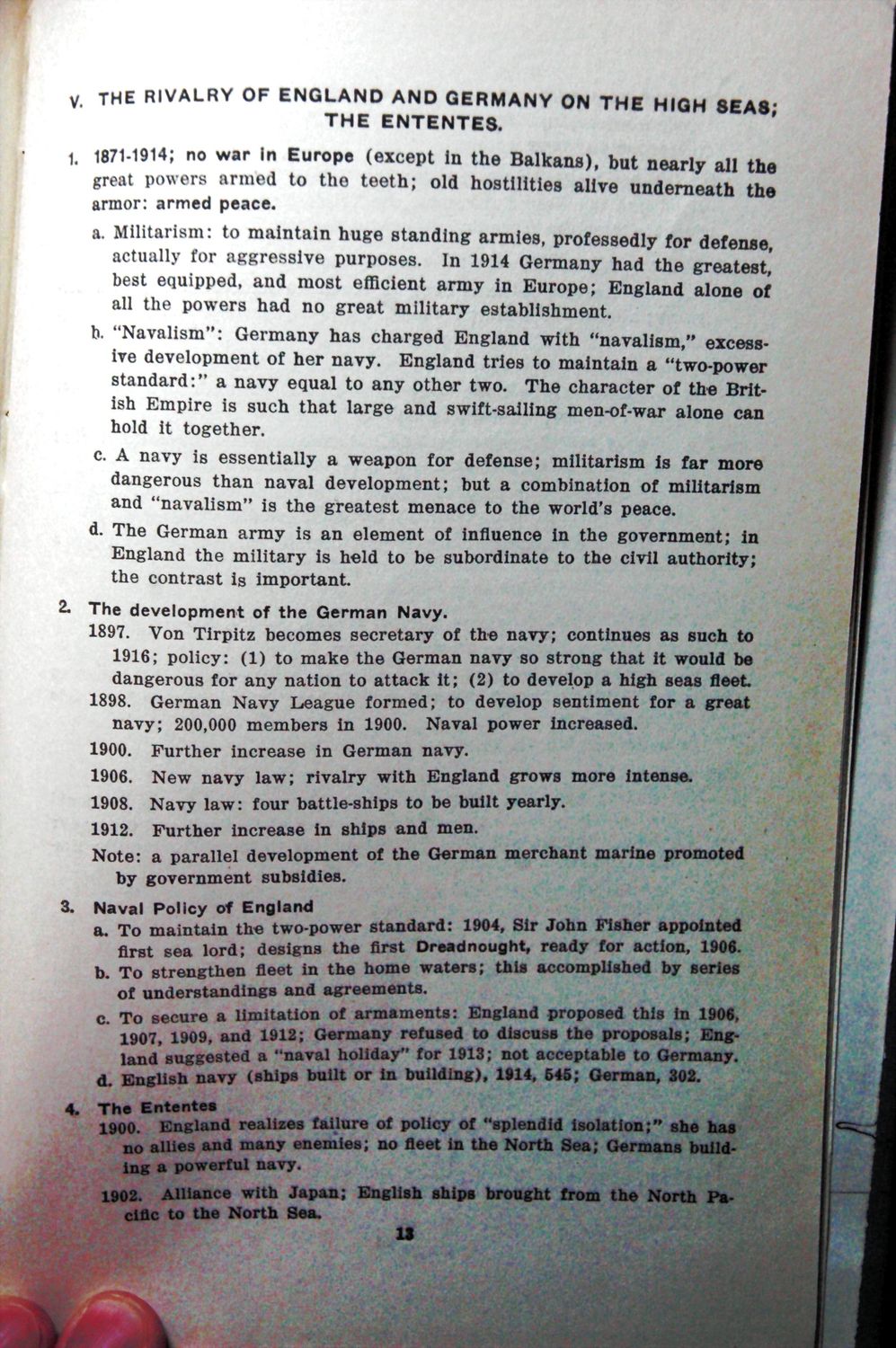Caption: War Publications - WWI Compilation 1923 - Article 49
This is a reduced-resolution page image for fast online browsing.

EXTRACTED TEXT FROM PAGE:
v. THE RIVALRY OF ENGLAND AND GERMANY ON T H E HIGH 8EA8; T H E ENTENTES. 1871-1914; no war in Europe (except In the Balkans), but nearly all the great powers armed to tho teeth; old hostilities alive underneath the armor: armed peace. a. Militarism: to maintain huge standing armies, professedly for defense, actually for aggressive purposes. In 1914 Germany had the greatest, best equipped, and most efficient army in Europe; England alone of all the powers had no great military establishment. b. "Navalism": Germany has charged England with "navalism," excessive development of her navy. England tries to maintain a "two-power standard:" a navy equal to any other two. The character of the British Empire is such that large and swift-sailing men-of-war alone can hold it together. c. A navy is essentially dangerous than naval and "navalism" is the d. The German army is a weapon for defense; militarism is far more development; but a combination of militarism greatest menace to the world's peace. an element of influence in the government; in subordinate the contrast is important. 2. The development of the German Navy. 1897. Von Tirpitz becomes secretary of the navy; continues as such to 1916; policy: (1) to make the German navy so strong that it would be dangerous for any nation to attack it; (2) to develop a high seas fleet 1898. German Navy League formed; to develop sentiment for a great navy; 200,000 members in 1900. Naval power Increased. 1900. Further increase in German navy. 1906. New navy law; rivalry with England grows more intense. 1908. Navy law: four battle-ships to be built yearly. 1912. Further increase in ships and men. Note: a parallel development of the German merchant marine promoted by government subsidies. # 3. Naval Policy of England a. To maintain the two-power standard: 1904, Sir John Fisher appointed first sea lord; designs the first Dreadnought, ready for action, 1906. b. To strengthen fleet in the home waters; this accomplished by series of understandings and agreements. c. To secure a limitation of armaments: England proposed this in 1906 1907, 1909, and 1912; Germany refused to discuss the proposals; England suggested a "naval holiday" for 1913; not acceptable to Germany. d. English navy (ships built or in building), 1914, 645; German, 302. 4. The Ententes 1900. England realizes failure of policy of "splendid isolation," she has no allies and many enemies; no fleet in the North Sea; Germans building a powerful navy. 1902. Alliance with Japan; English ciflc to the North Sea. II 1
|